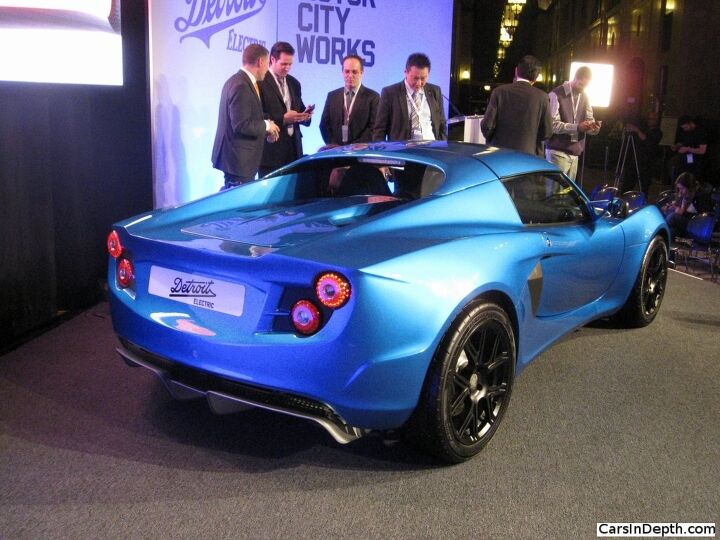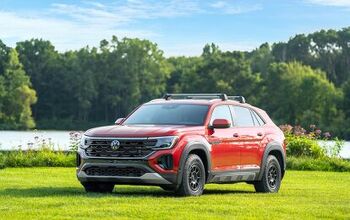Detroit Electric Will Outsource Much But Will Assemble Own Battery Packs

While Damon Lavrinc at Wired’s Autopia makes the observation that the revived Detroit Electric company seems to be following the Tesla playbook, launching their company with a car based on an electrified small Lotus, Detroit Electric CEO Albert Lam insists that his team is using a different business model than Tesla and that they have learned from other EV startups’ mistakes. Lam also said there was no comparison between Detroit Electric and Fisker, which appears to be headed to bankruptcy soon, having just furloughed all but 50 employees. Detroit Electric says they are following the model of Apple (on Lam’s CV along with a stints at Lotus and Sun Microsystems) focusing on design and engineering with much of everything else contracted out. Lam pointed out, at a press conference following the reveal of the SP:01 sports car, that buying and equipping a factory to build an original platform, as Tesla is doing, or even contracting out assembly of an original platform, as Fisker has tried to do, both require up front investments of hundreds of millions, perhaps a billion dollars or more, requiring quick success and substantial early sales just to break even.
Tesla used a Lotus platform to get their company off the ground with their Roadster but much of Tesla’s focus has been developing the all-original Model S, built in the former NUMMI GM/Toyota plant in California. Detroit Electric will only be selling 1,000 of the $135,000 SP:01 as the startup moves to put a volume model, in sedan and hatchback styles, into production. Those new cars, with a projected sales figure of 10,000 units in 2015, ramping up to perhaps 40,000 in three years, will not have a unique platform like the Tesla Model S or the Fisker Karma. While that 40,000 unit figure seems a bit optimistic, Tesla is producing (and selling, they claim) the Model S at a rate of about 20,000 units a year, Chevy sold 23,400 Volts in North America in 2012 and just shy of 10,000 Nissan Leafs were sold in that market last year. Globally, Nissan sold about 27,000 Leafs, so Detroit Electric could be selling ten to twenty thousand cars a year if they have a competitive product.
They wouldn’t say who will be supplying them with gliders, but Lam said that an announcement of a strategic partner will be made at the upcoming Shanghai auto show. Lam did say that their platform supplier will be in Asia and that the cars will be built with unique Detroit Electric exterior bodies and interiors, as well as the tech features unique to the SP:01, particularly the SAMI smartphone app that controls most of the car’s infotainment. By giving their cars a brand specific look and a competitive interior, perhaps Detroit Electric will avoid the problems that another EV startup, Coda, has faced. Coda also based it’s business model around selling an electric version of an existing platform, but they decided to use a rather generic looking sedan from China’s Changan Hafei that is arguably the most boring looking car on sale in North America. Also, consumers have said that the Coda’s cheap interior plastics look out of place in car that has a list price of over $44,000. Reportedly Coda sold less than 100 cars in 2012 and early this year there were reports that the company had laid off 30% of its workforce. One dealer had slashed prices 40% on the Codas he had in stock.
Detroit Electric did promise that they will be doing final assembly in a Detroit area facility. Lam said that components will come in “CKD” (completely knocked down) form that will then be put together in Michigan. In a sense, that reverses how the big Detroit automakers often shipped CKD kits to foreign subsidiaries where they would be assembled. A similar facility will be operated in Europe for cars sold in Europe and Asia. North American distribution will be done through traditional dealers, most likely a hookup with a large dealer group. European sales will follow a new model, though the only hint they gave us was that it will operated on the model of “don’t call us, we’ll call you”, whatever that means.
One actual similarity with Tesla is that Detroit Electric will be assembling their own battery packs from cells supplied by vendors. That assembly, along with that of the batteries’ air-cooled thermal management system, will be done in the Detroit area. Detroit Electric’s head of engineering, Ben Boycott, said that the company “for commercial reasons” will not be using a single supplier for their cells. That’s a smart move after Fisker’s production was interrupted by battery maker A123’s own bankruptcy.
Korea’s Kokam had already been mentioned as a possible supplier to Detroit Electric. An additional battery maker will be announced as soon as final prices are negotiated. Boycott said that from a technical standpoint both Kokam cells and those supplied by the other company are equivalent. That other company will also be Korean but will not be LG Chem, who supplies the Chevy Volt. If you want to sleuth it out, Lam did say that the unnamed Korean battery supplier already has a facility near Detroit.
Detroit Electric, like Tesla, will also offer the same cars in two different battery capacities, ranges and prices. The entry level, lower range car will be competitively priced to the Nissan Leaf. Lam mentioned a price of $32-$35,000, the cost of a loaded midsize car these days.
Lam stressed how Detroit Electric will be “an American company”, headquartered and operated out of Detroit. Currently, six people work in Detroit Electric’s temporary offices in Detroit’s historic Fisher Bldg, including Don Graundstadt, CEO of North American operations. Once their permanent offices in the building are ready, that will go up to about 20, the same number of people who will initially staff the local assembly facility. An engineering and R&D center employing up to 200, also in the Detroit area, is in their plans. When asked about the company’s financing, Lam said that they have both private and strategic investors, including the company that supplies them with battery packaging equipment. He took pains to emphasize how he had recently been contacted by investment bankers representing a state owned Chinese business looking to invest in Detroit Electric and that he turned them down. He said that they welcomed private equity investors, and specifically mentioned investors in Europe and Hong Kong, but that they did not want any equity investments from governments linked businesses.
On the topic of government money, Detroit Electric received a $50,000 forgivable startup loan from Ann Arbor’s SPARK business incubator which was repaid in full.
Ronnie Schreiber edits Cars In Depth, a realistic perspective on cars & car culture and the original 3D car site. If you found this post worthwhile, you can get a parallax view at Cars In Depth. If the 3D thing freaks you out, don’t worry, all the photo and video players in use at the site have mono options. Thanks for reading – RJS

Ronnie Schreiber edits Cars In Depth, the original 3D car site.
More by Ronnie Schreiber
Latest Car Reviews
Read moreLatest Product Reviews
Read moreRecent Comments
- SCE to AUX Range only matters if you need more of it - just like towing capacity in trucks.I have a short-range EV and still manage to put 1000 miles/month on it, because the car is perfectly suited to my use case.There is no such thing as one-size-fits all with vehicles.
- Doug brockman There will be many many people living in apartments without dedicated charging facilities in future who will need personal vehicles to get to work and school and for whom mass transit will be an annoying inconvenience
- Jeff Self driving cars are not ready for prime time.
- Lichtronamo Watch as the non-us based automakers shift more production to Mexico in the future.
- 28-Cars-Later " Electrek recently dug around in Tesla’s online parts catalog and found that the windshield costs a whopping $1,900 to replace.To be fair, that’s around what a Mercedes S-Class or Rivian windshield costs, but the Tesla’s glass is unique because of its shape. It’s also worth noting that most insurance plans have glass replacement options that can make the repair a low- or zero-cost issue. "Now I understand why my insurance is so high despite no claims for years and about 7,500 annual miles between three cars.






































Comments
Join the conversation
It would be grand if they would produce this car in the Boxwood plant near Wilmington Delaware. Fisker screwed us over on that deal and we the people spend 1 mil a month keeping it lit and heated.
These folks are trying to tie 2 rocks together to hope that they can float!